A Power BI waterfall chart is also called a bridge chart. It uses a series of continuous vertical bar columns showing the profit (gain) or loss. The columns in this Waterfall chart are color-coded, where green represents the increase (positive), red means the decrease (negative), and blue for the total.
Power BI Waterfall Chart is very useful for visualizing the Sales or Profit over some time. Let me show you how to create a Waterfall Chart with an example.
When to use Power BI Waterfall charts?
- To examine the changes that happened to the total profits or any value.
- To identify or track the profit and loss of the whole business.
- It is helpful to show categorical or sequential data.
- To track the changes (money or number) across time, categories, or stages.
For this Power BI Waterfall Chart demonstration, we will use the Excel Data Source that we created in our previous article. So, Please refer to the Connect to Excel Multiple Excel Sheets and Charts article to understand the Power BI Data Source.
How to Create a Waterfall Chart in Power BI
To create a Waterfall Chart, first, Drag and Drop the Profit from the Fields section to the Canvas region. It automatically creates a Column, as shown below.
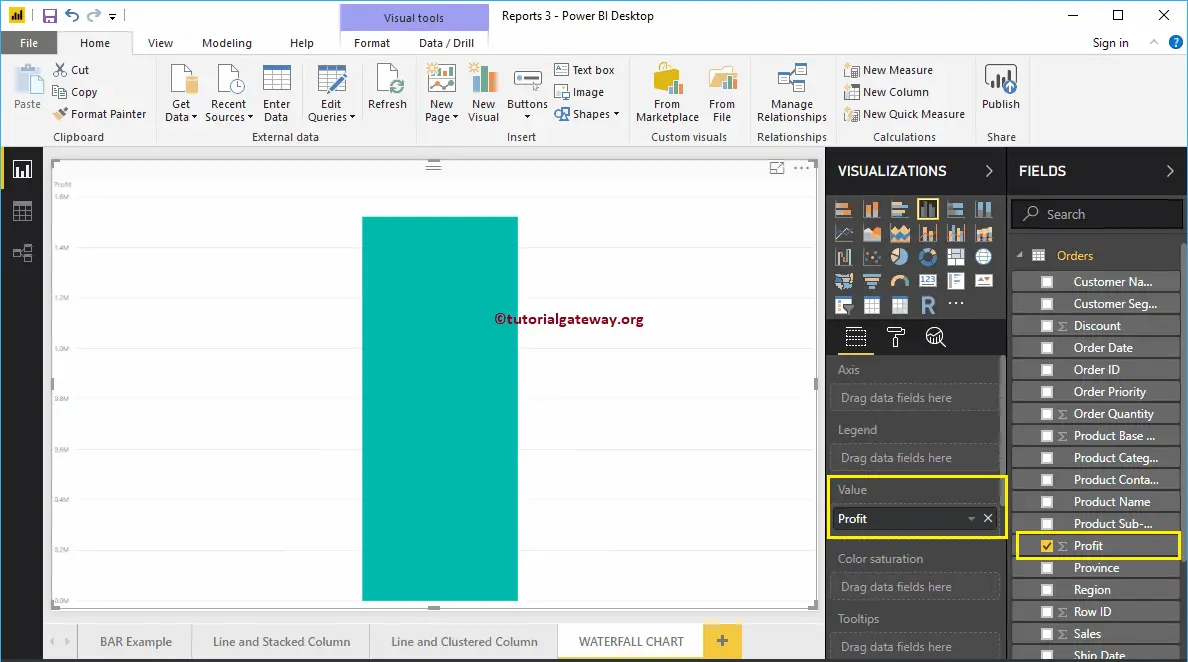
Let me add the Product Sub-Category to the Axis section.
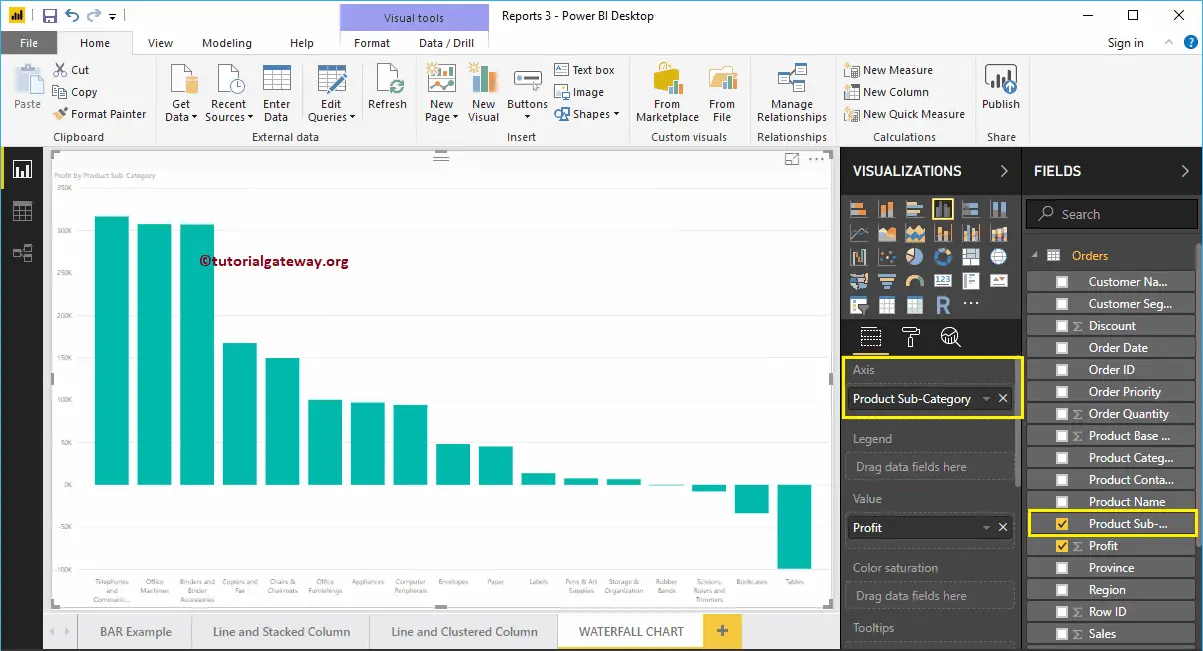
Click on the Power BI Waterfall Chart under the Visualization section will automatically convert a Column Chart.
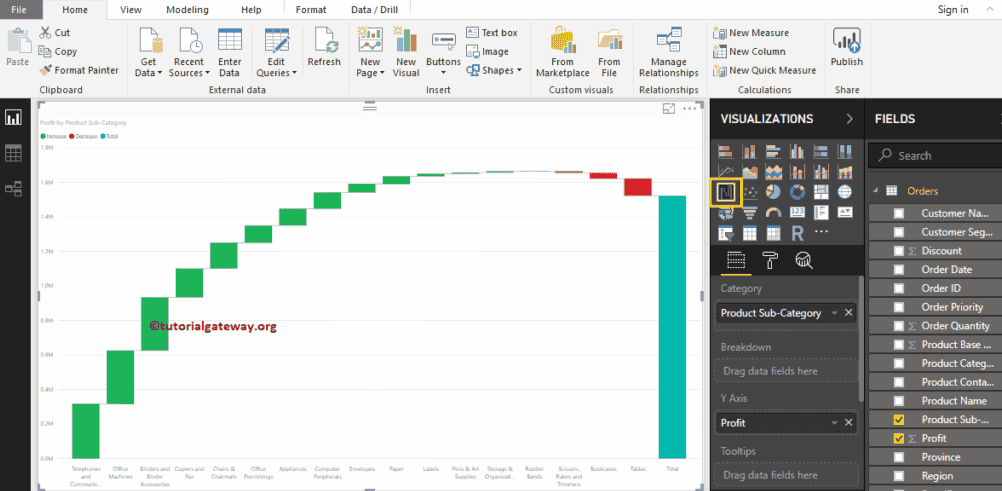
Next, we added the Data Labels to see the increased or decreased profit amount. Under the sentiment colors, you can change these bar colors as well.
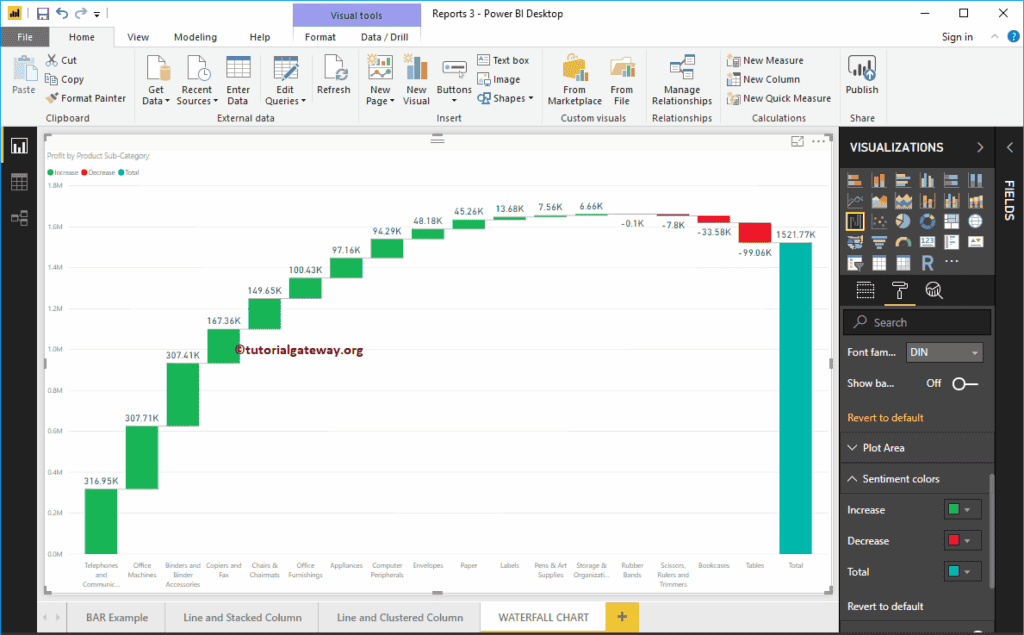
Create a Waterfall Chart in Power BI using Visualization
First, click on the Waterfall Chart under the Visualization section. It automatically creates it with dummy data, as shown in the screenshot below.
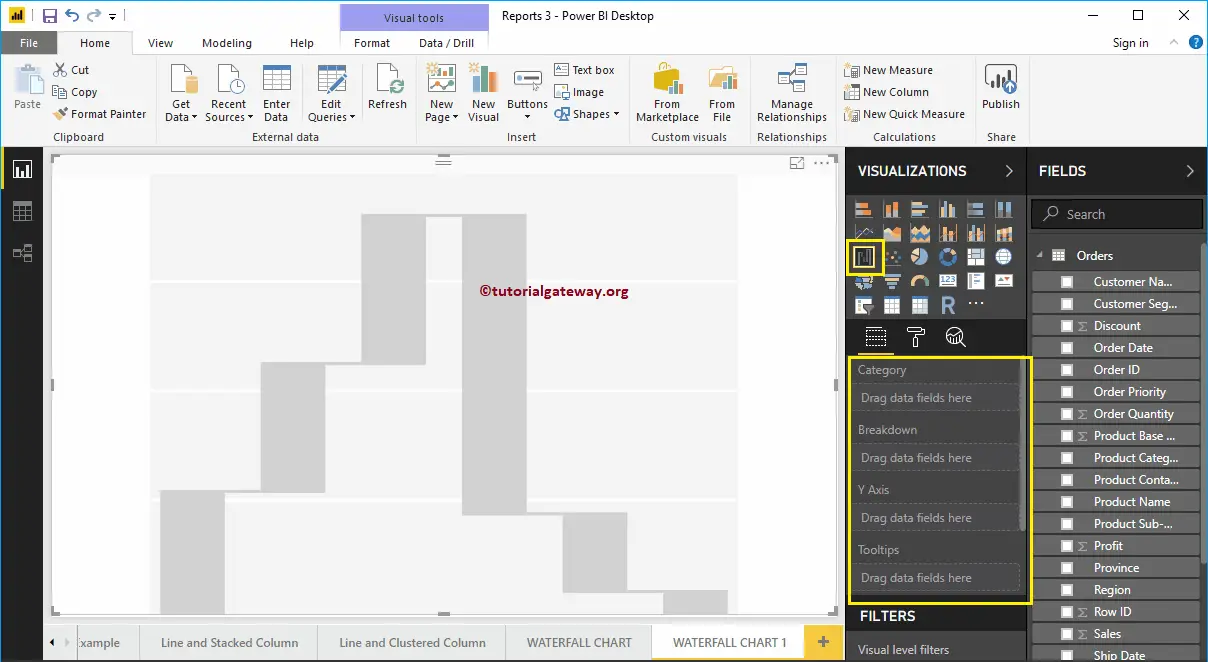
To add data to the Power BI Waterfall Chart, we have to add the required fields:
- Category: Please specify the Column that divides this plot (Horizontal axis column).
- Breakdown: Specify the Column that sub-divides the Details data.
- Y-Axis: Please specify the Metric Column that represents the Vertical Axis.
Let me drag the Profit from the Fields section to the Y-Axis section.
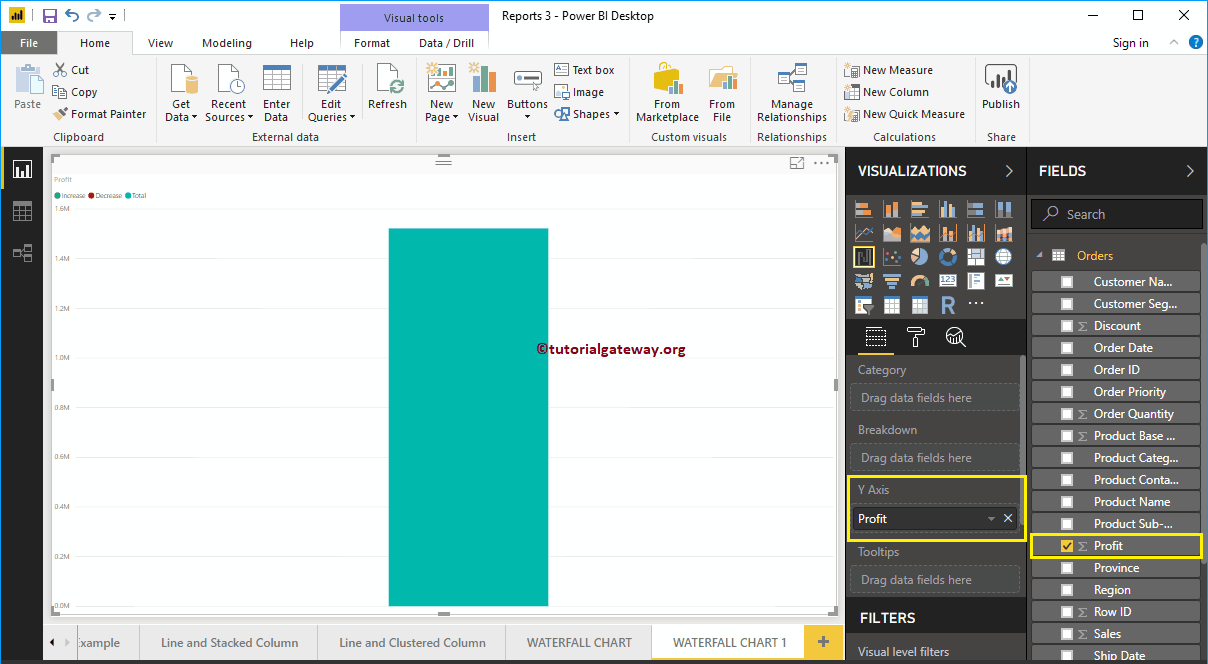
Next, let me add the Product Container to the Category section. You can do this by dragging the Product Container to the Category section or simply checkmark the Product Container column.
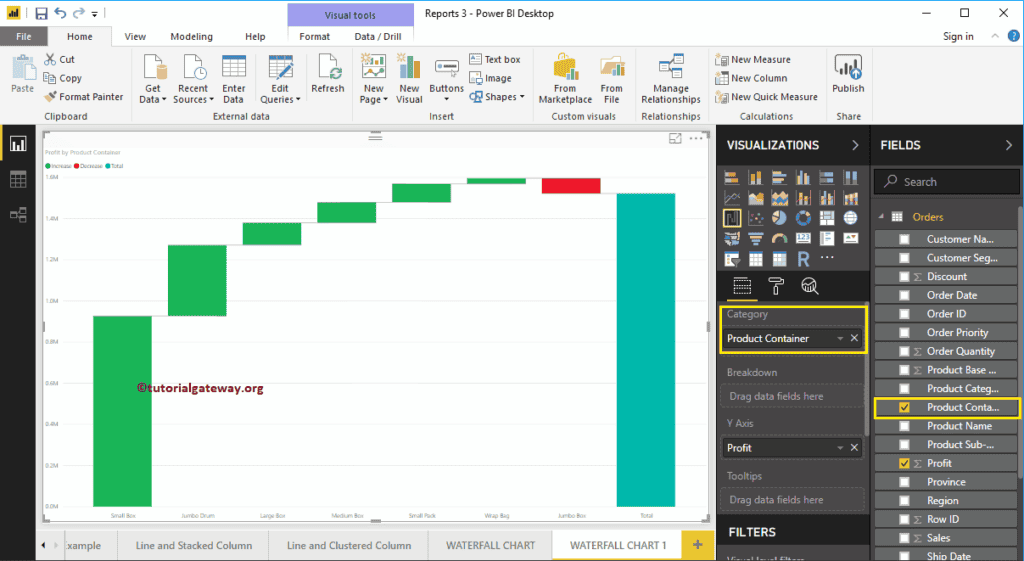
Next, we added the Data Labels so that you can see the increased profit.
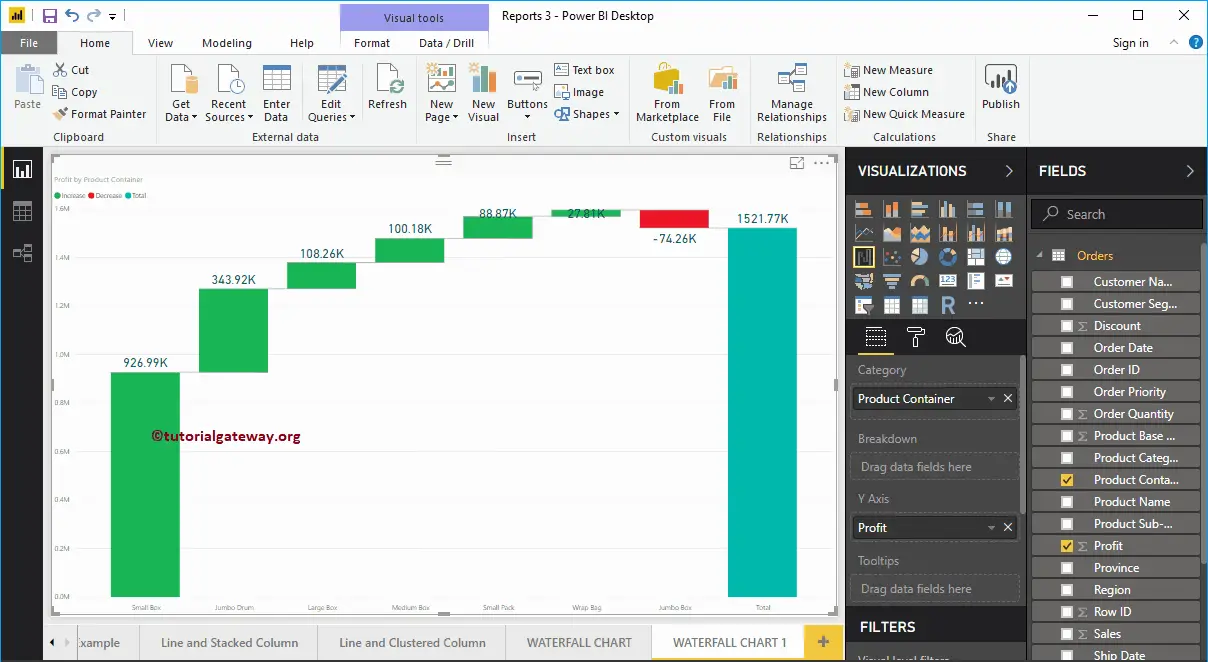
From the above screenshot, you can see that it is sorted by Profit in descending order. So, let me sort the chart by Profit in ascending order.
Sort the Power BI Waterfall Chart
To do this, click on the … (3 dots) in the top right corner and select the Sort By Profit option’s Left corner, as shown below.
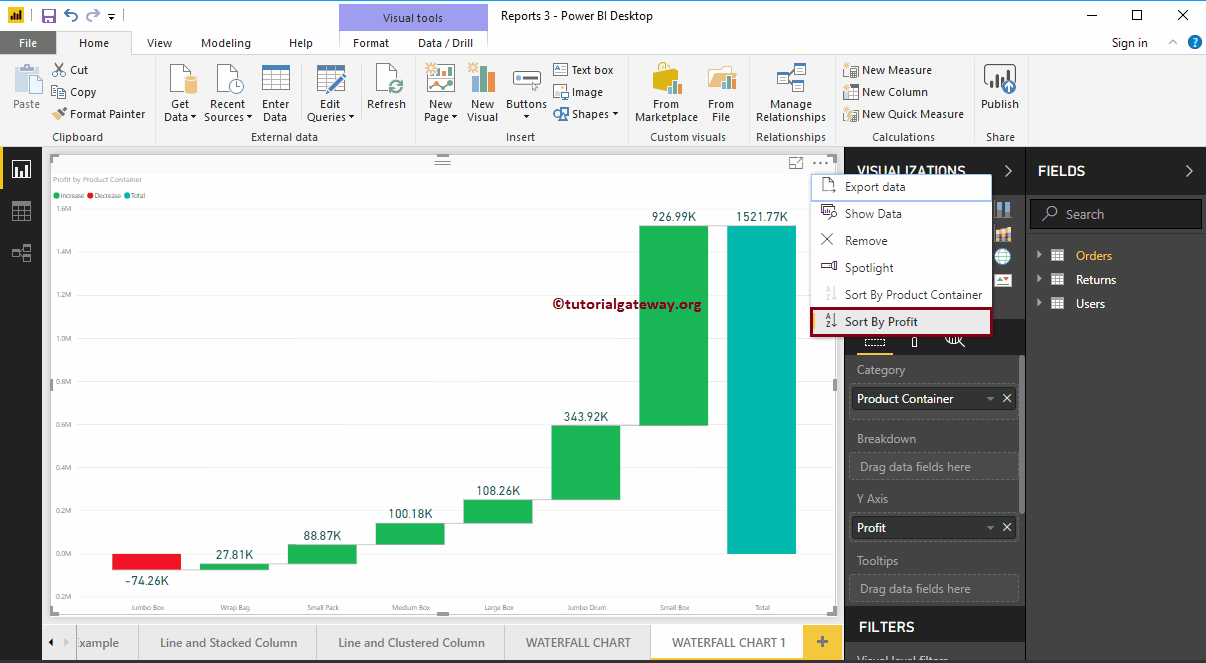
This time, we sorted the data by Product Container in descending order.
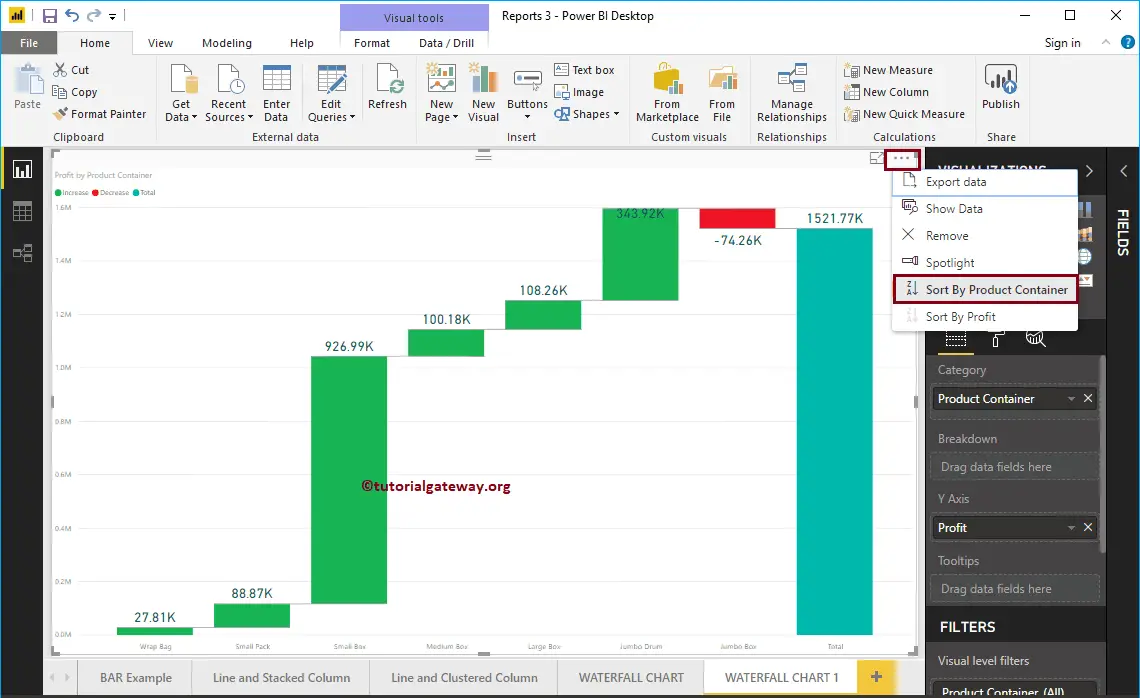
This time, we sorted the data by Product Container in ascending order.
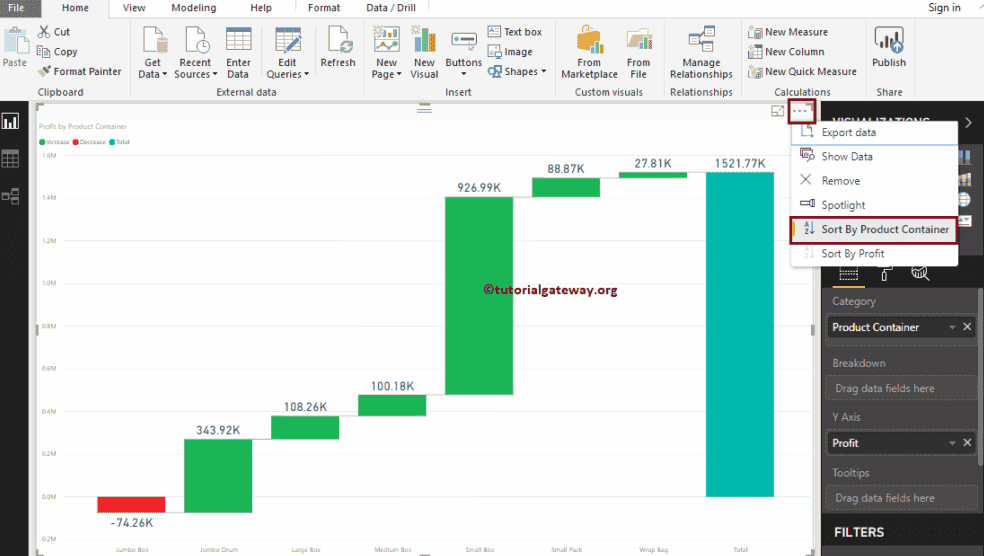
Explore or Breakdown the Waterfall Chart
Let me add a Customer Segment to the Breakdown section. As you can see from the screenshot below, it has been further divided based on the Customer Segment.
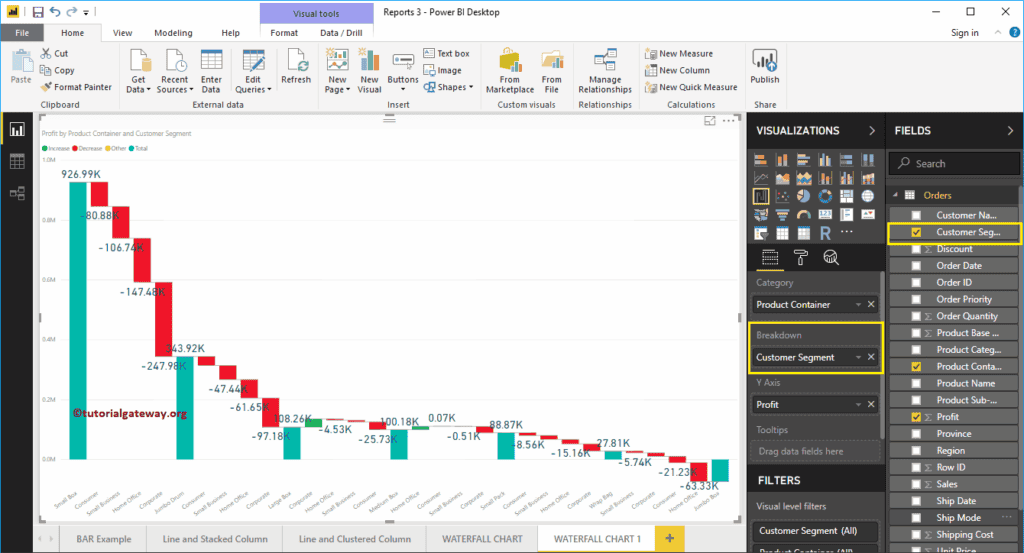
Let me do some quick formatting to this Power BI Waterfall Chart. I suggest you check the Format section of the article to understand the formatting options.
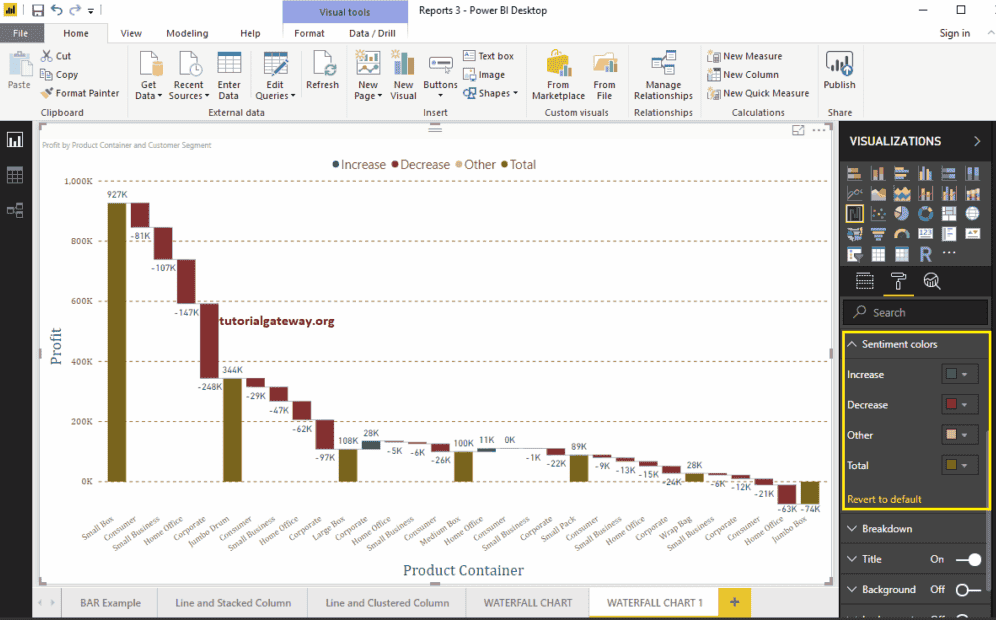
Format Power BI Waterfall Chart
How to Format Power BI Waterfall Chart with an example? Formatting the Waterfall Chart includes changing the Bar colors, Waterfall Chart Title text, Title position, Y-Axis and X-Axis Details, Data labels, Background Images, etc. To demonstrate these Waterfall Chart formatting options, we will use the Waterfall Chart that we created earlier.
Please click on the Format button to see the list of formatting options available for this Waterfall Chart. As you can see from the screenshot below, Hovering over any bar shows you the Profit difference between the Product Containers.

Format Power BI Waterfall Chart General Settings
Use this General Section to Change the Chart Responsiveness, X, Y position, Width, and height of a Waterfall Chart.
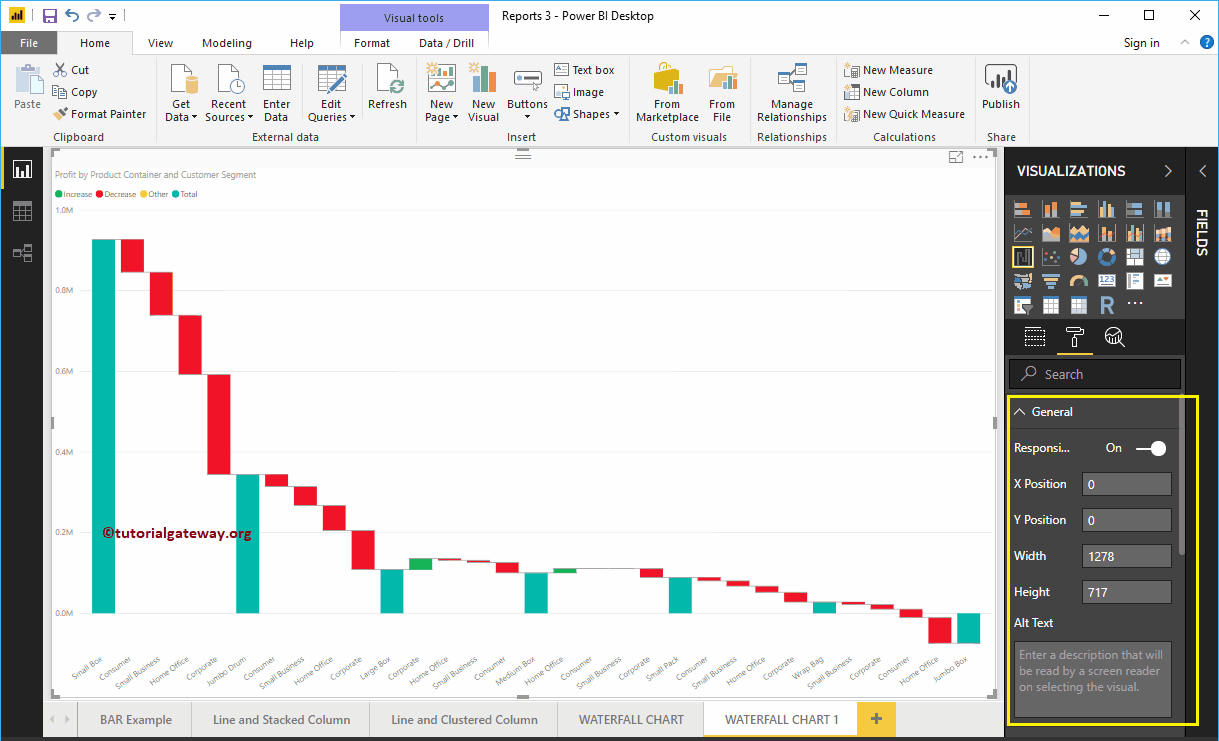
Format Legend of a Waterfall Chart in Power BI
Please select the Legend region and toggle the option from Off to On to enable Legend.
As you can see from the screenshot below, we used the Position drop-down box to change the legend position to Top Center. Next, we changed the legend Color to Brown and the text size to 15.
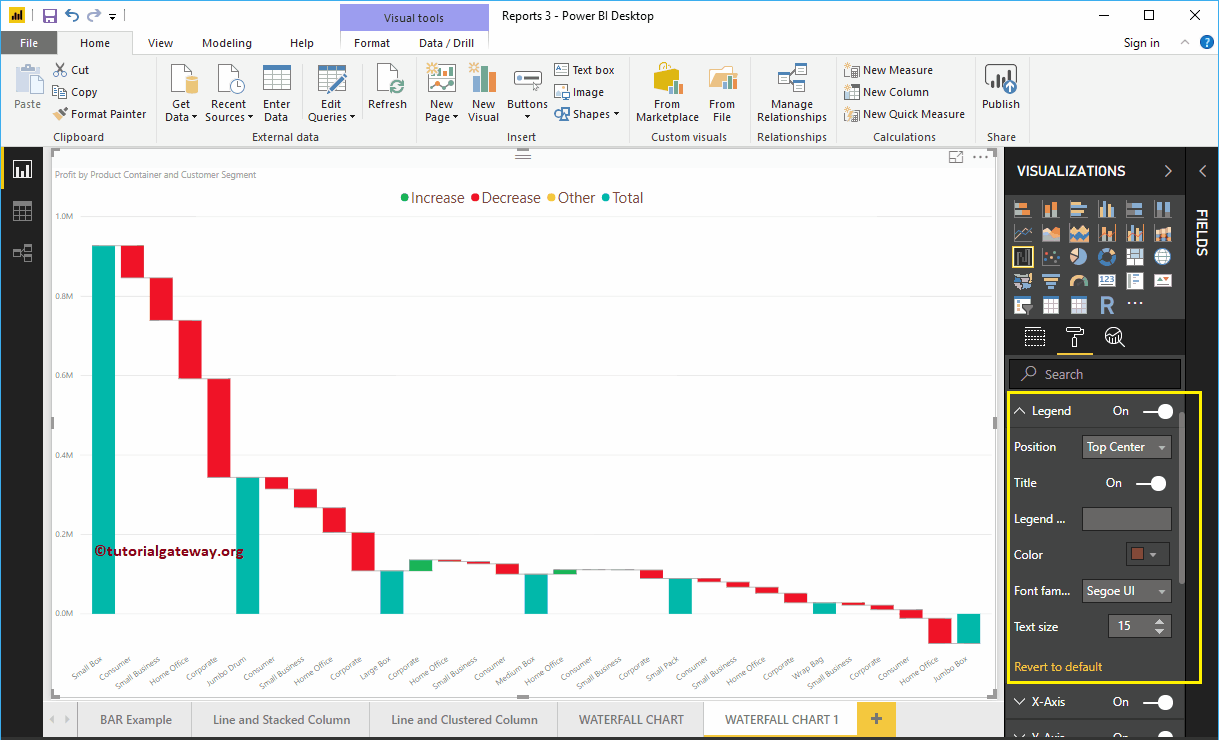
Format X-Axis of a Waterfall Chart in Power BI
The following is the list of options available for you to format the Horizontal axis or X-axis. As you can see from the screenshot below, we changed the Color to Brown, the Text Size to 14, and the font family to Cambria.
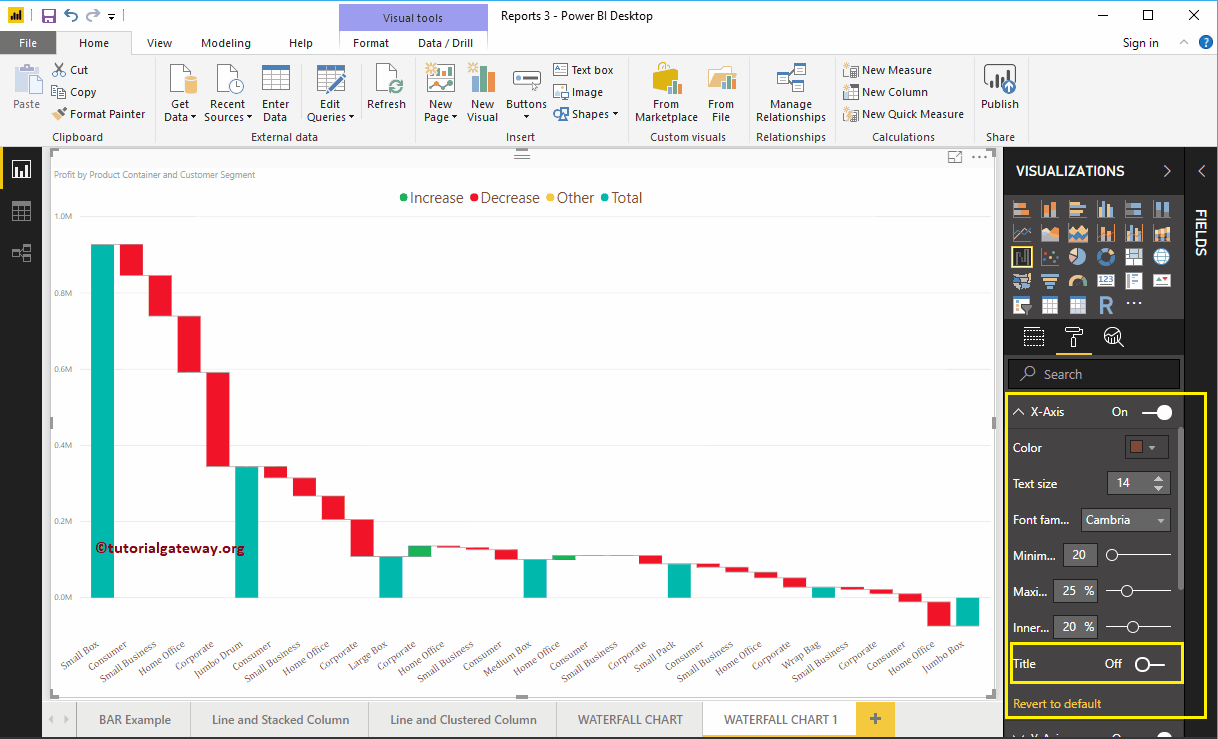
By default, the X-Axis title is set to Off. Let me change the option from Off to On. Next, change the Title Color to Green, the Font Style to Cambria, and the Font Size to 25.
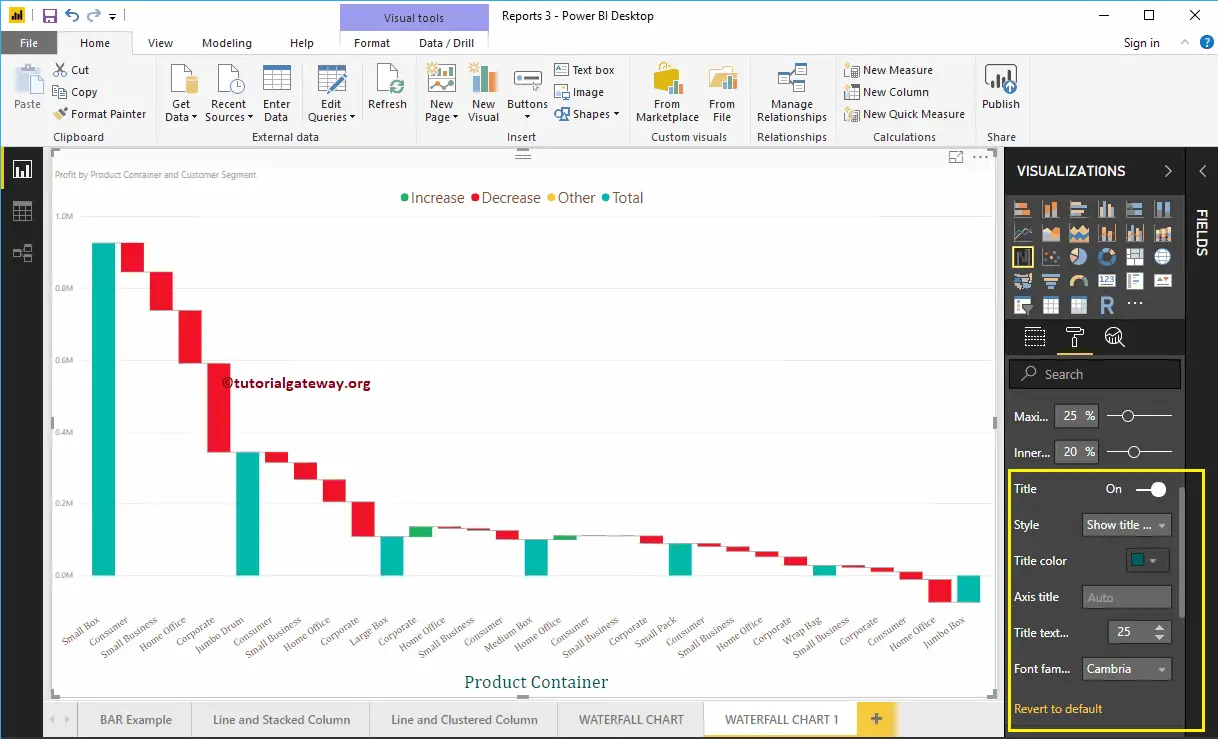
Format Y-Axis of a Power BI Waterfall Chart
The following is the list of options available to format the vertical Axis. Here, you can change the default start and end values of the YAxis.
As you can see, we changed the Y-Axis Font color to Brown, the Font Family to Cambria, the Display units to Thousands, and the Text Size to 15.
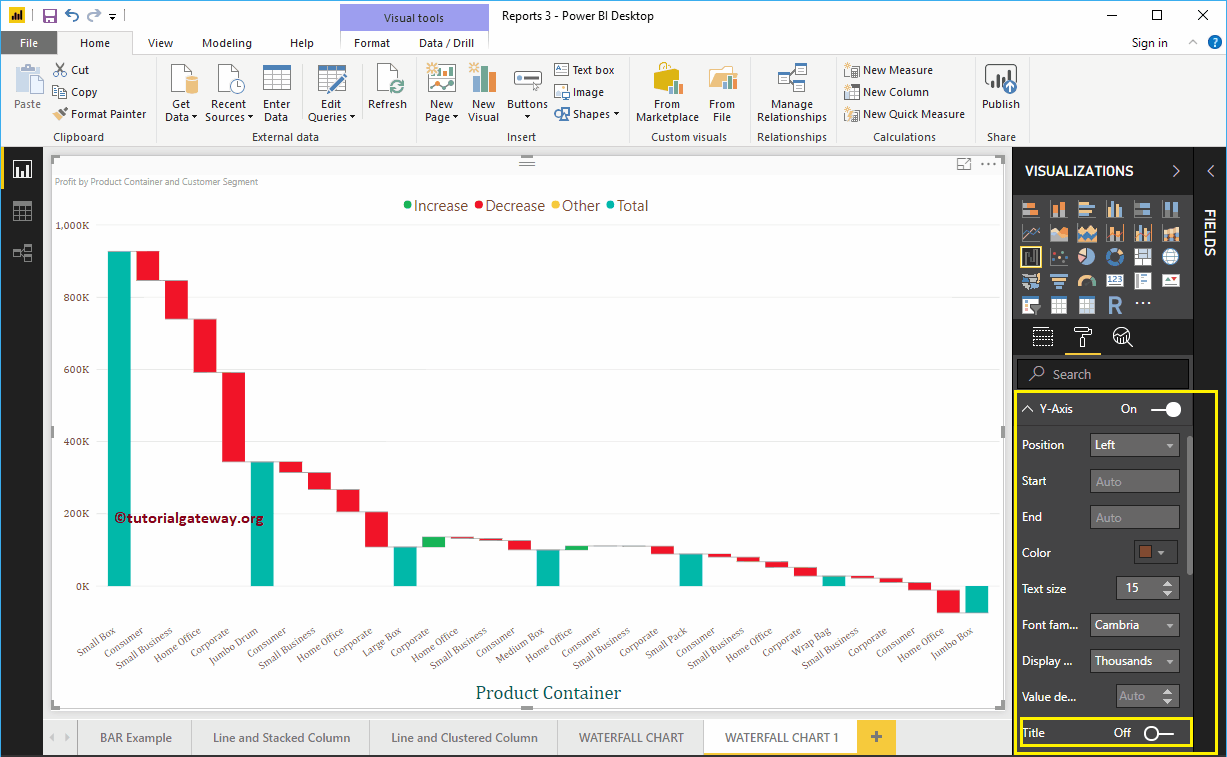
By default, the X-Axis title is set to Off. Let me change the option from Off to On. Next, we changed the Y-Axis Title Color to Green, Text Size to 25, and the Font family to Cambria.
By toggling the Gridlines option from On to Off, you can disable the Gridlines. Here, we changed the color to gold and the line style to dashed.
- Color: You can change the Gridlines color.
- Stroke Width: Use this to change the Gridlines width.
- Line Style: Choose a line style such as Solid, dotted, or dashed.
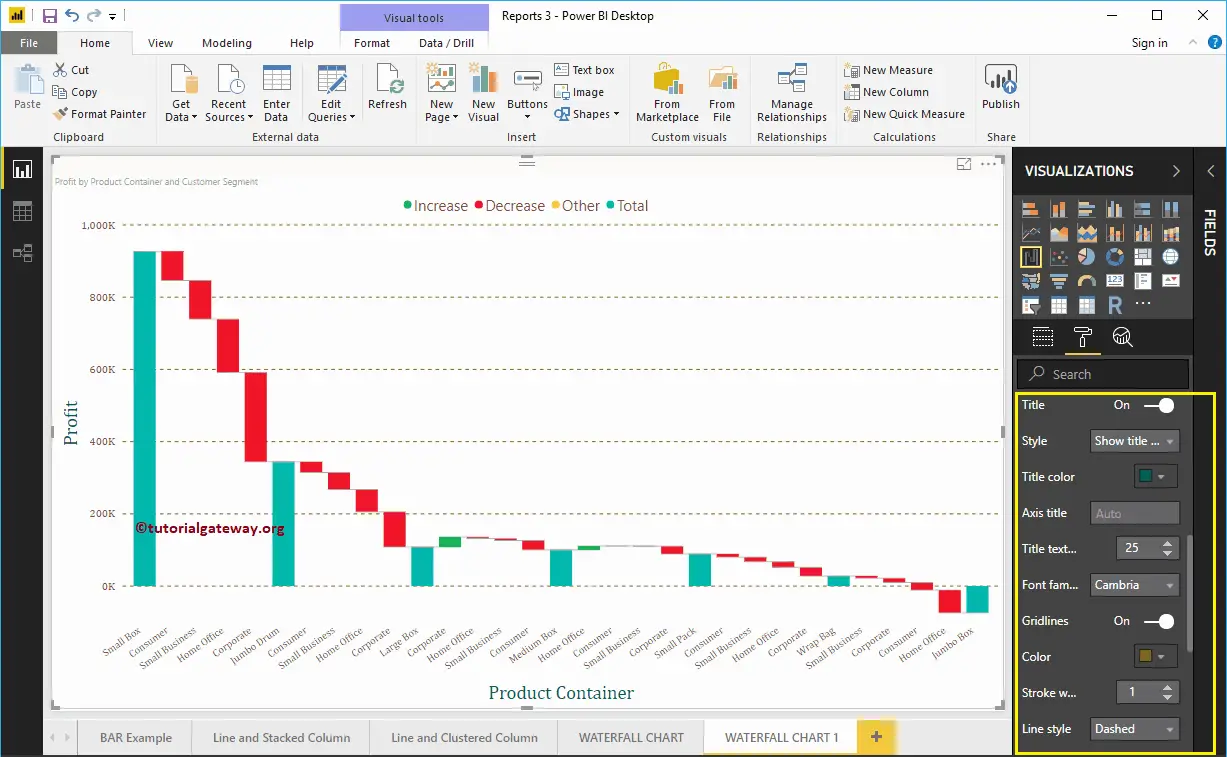
Format Data Labels of a Waterfall Chart in Power BI
Data Labels display the Values (Sales or Profit at each point in time). As you can see from the screenshot below, we enabled data labels and changed the color to green.
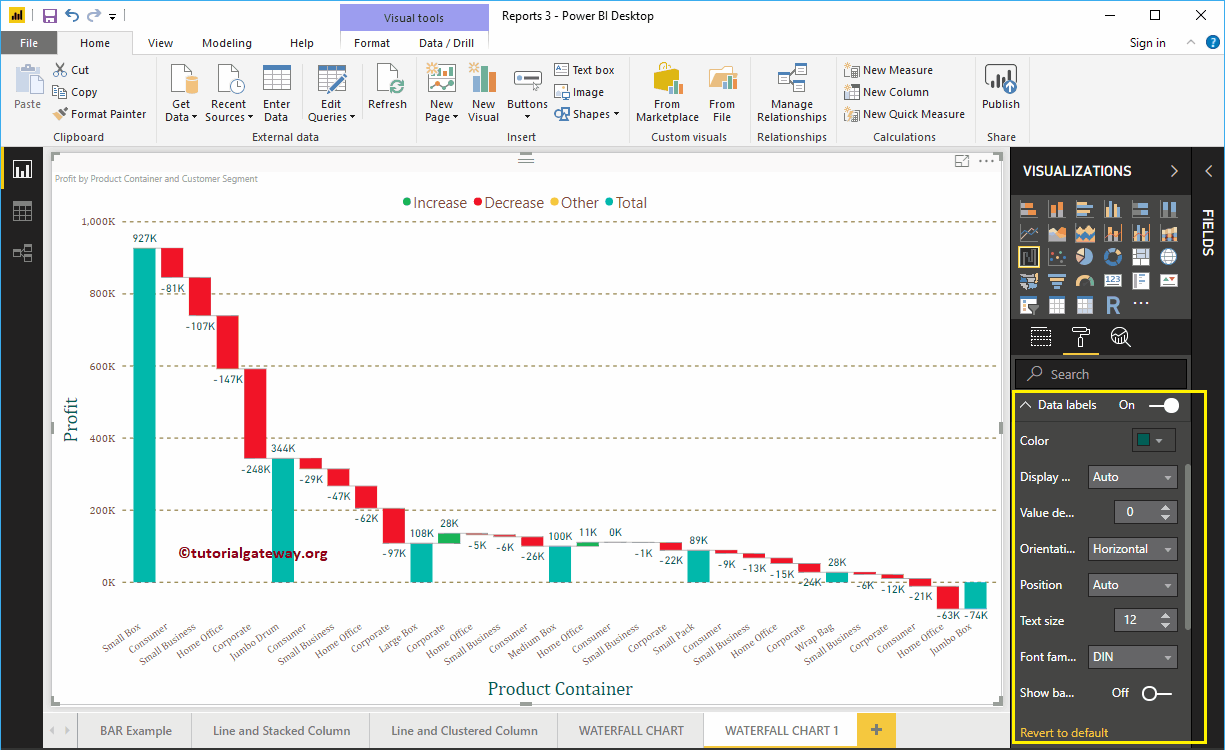
Format Waterfall Chart in Power BI Plot Area
Using this Plot Area property, you can add custom Images as the Background of the waterfall Chart. For demonstration purposes, we added one image as the Plot Area Background.
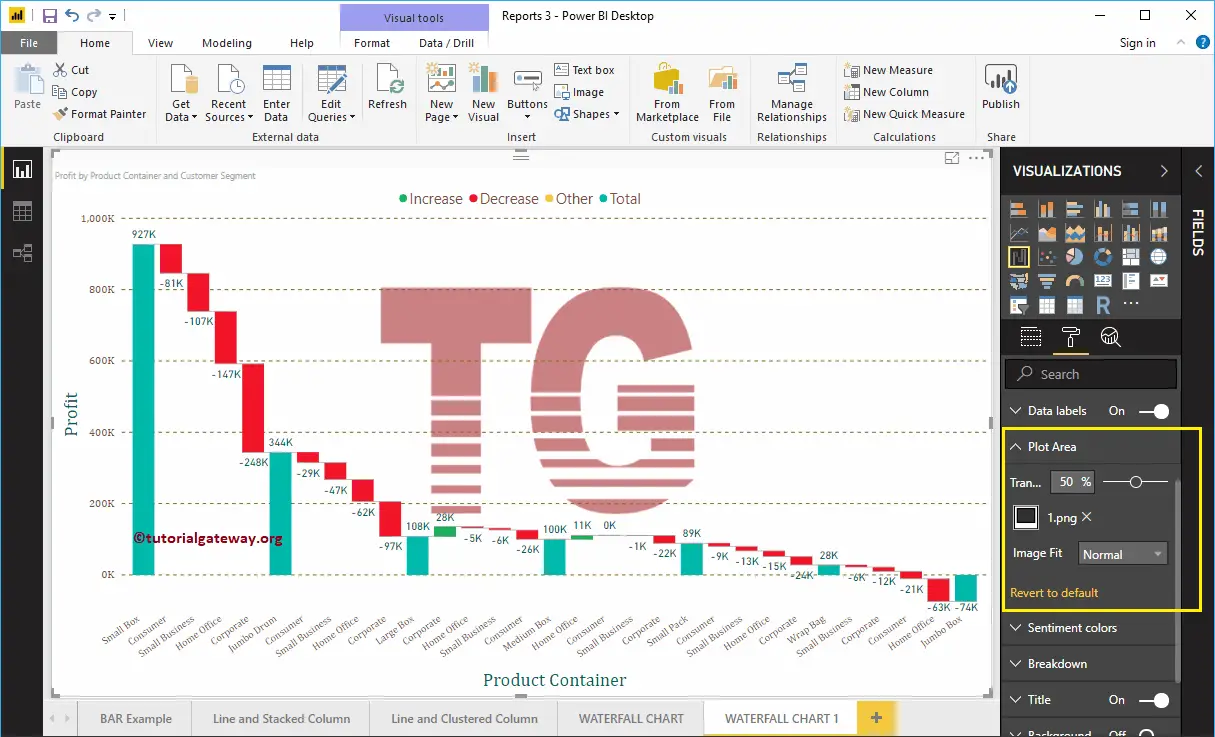
Format Power BI Waterfall Chart Data Colors
Please change these colors as per your requirements.
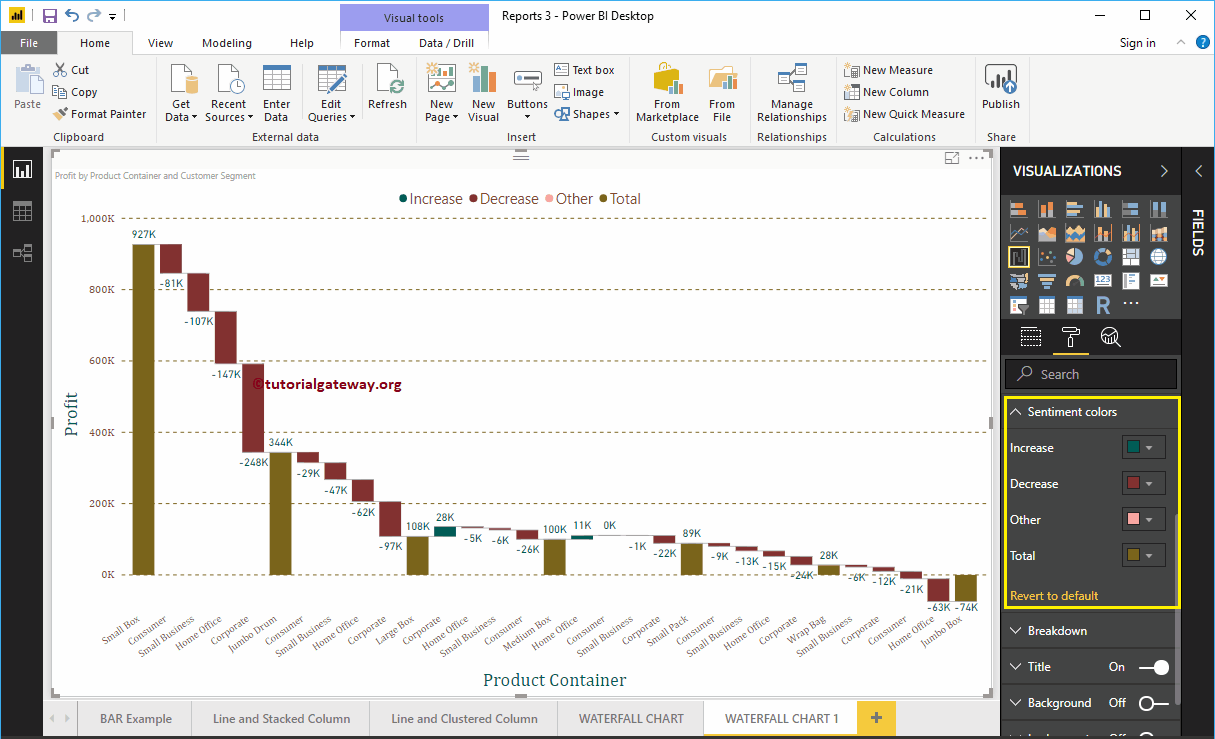
Format Power BI Waterfall Chart Breakdown
This option restricts the number of breakdowns of waterfall charts allowed. While creating this waterfall chart, we added the Customer Segment as the Breakdown property.
Our data has 4 records under the Customer Segment, and that’s why the breakdown shows those 4 records.
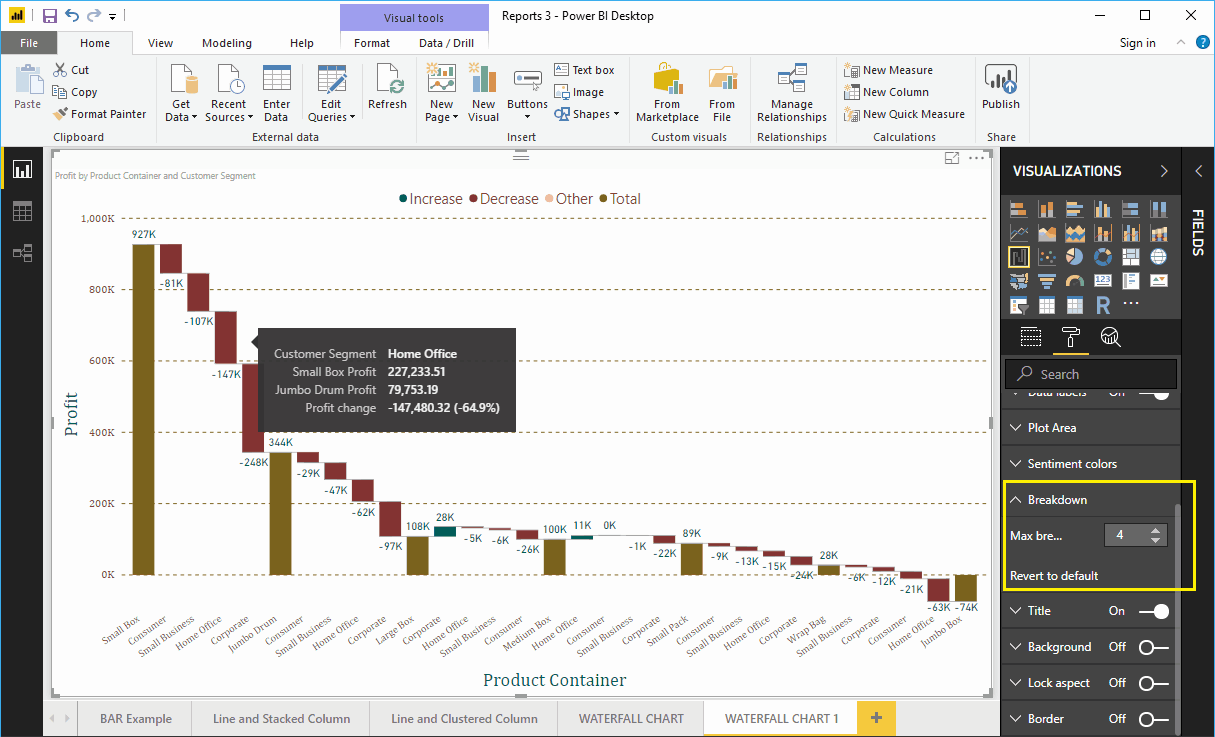
Let me change the value to 2. It means the waterfall allows a maximum of two breakdowns between each product container.

Format Power BI Waterfall Chart Title
You can disable the Waterfall Chart title by toggling the Title option from On to Off. From the screenshot below, we changed the Font Color to Green, the Title Alignment to the center, the Text Size to 25, and the Font Family to Georgia. You can add the background color to the title if you want.

Format Power BI Waterfall Chart Background Color, and Borders
You can add the Background color to a Waterfall Chart by toggling the Background option to On. For demonstration purposes, we added a random yellow color with 30% transparency.
Similarly, you can add Borders to a Waterfall Chart by toggling the Border option from Off to On.

Waterfall Chart FAQs
Click on the Waterfall icon under the Visualization will automatically create a dummy. In addition, adding a Numerical measure (Profit or money spent) to the y-axis and a series or dimension to a category section generates the actual waterfall chart. For example, if you add another dimension to the Breakdown section, it will explore the details of the bridge chart.
Adding any hierarchy to the category section will enable drill-down action—for instance, date hierarchy or geography.
In general, Waterfall charts show the profits over time or running totals. These charts help to understand the positive and negative outcomes of the changes.
Under the Visualization pane, click on the Format your Chart option. Next, toggle the Data labels option On. Furthermore, you can format the color, font style, size, and display units to thousands, millions, etc.
